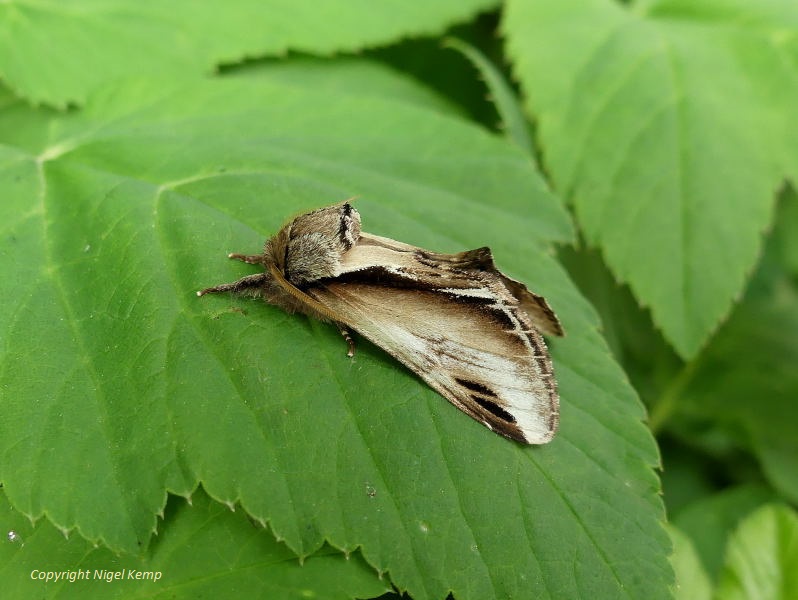During the last week, the moth-trap has continued to attract an ever increasing variety of species although the overall number of moths is still fairly low.
One of my favourite moth families are the Prominents. They get their name from the protruding tufts on the trailing edge of their forewings which help break up their outline when they are at rest.
Lesser Swallow Prominent (Pheosia gnoma)
Coxcomb Prominent (Ptilodon capucina)
Buff-tip (Phalera bucephala)
Pale Tussock (Calliteara pudibunda) (male)
Treble Lines (Charanyca trigrammica)
One surprise visitor to the moth-trap last week was a male Palmate Newt (Lissotriton helveticus) which was resting in the grass next to the light. The male is distinguished from the female by a dark stripe through the eye and webbed hind feet during the breeding season.
Palmate Newt (Lissotriton helveticus) (male)
A few days ago, we had our first dragonfly of the year to visit the garden.
Broad-bodied Chaser (Libellula depressa) (immature male)
On the 26th April, I looked up into the night sky and noticed how brightly Venus was shining. It was quite near the Moon (as viewed from Earth) and both were just above the horns of the constellation of Taurus.
My mind is continually boggled by the dimensions of the Solar System (never mind trying to get my head around the dimensions of the Universe).
I am one human who likes to know where the boundaries are!
Although Venus is about 40 million kilometres from Earth, I managed to get the following, rather abstract image of Venus by hand holding my bridge camera on full zoom.
As I say, mind boggling.
























